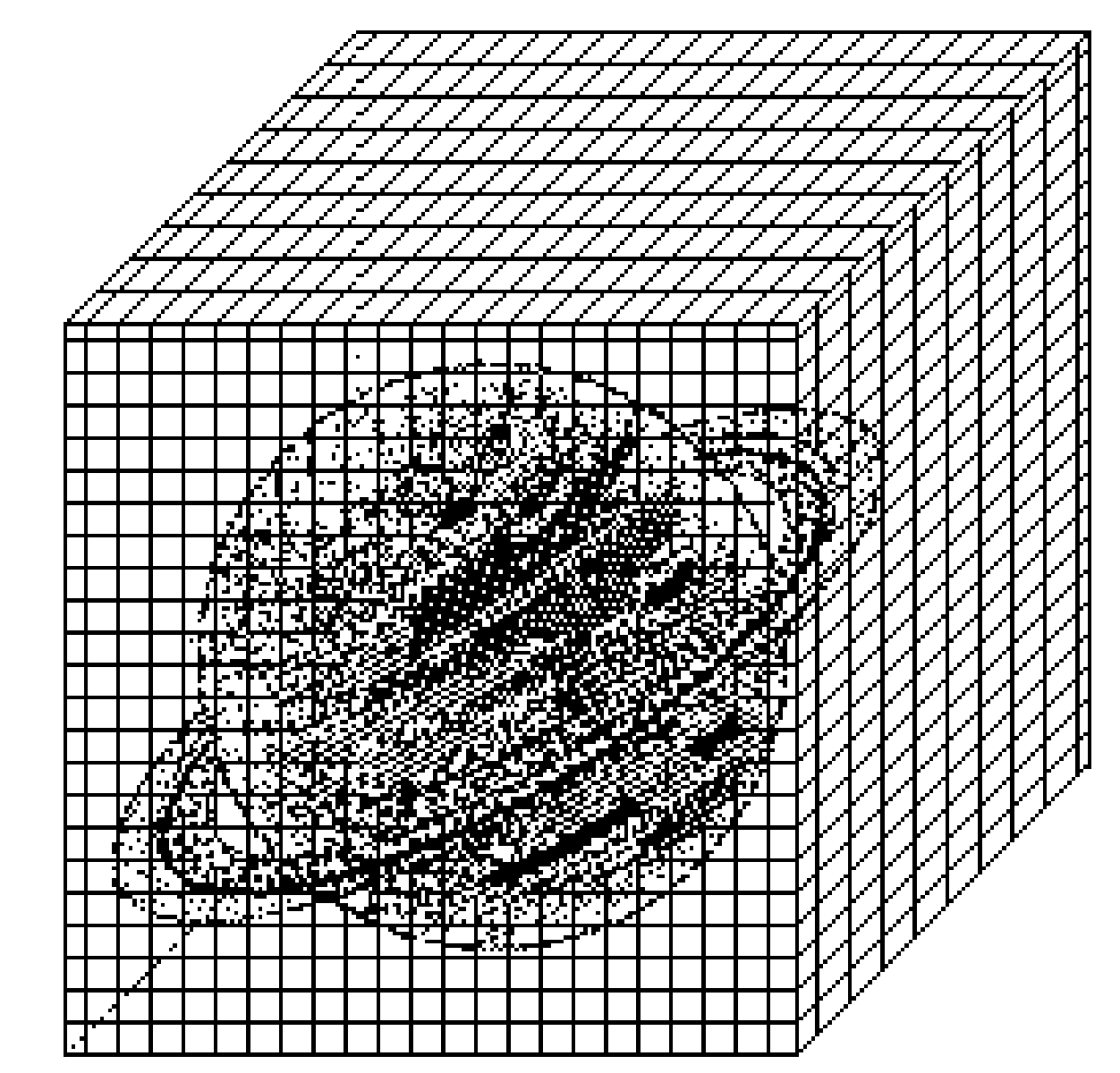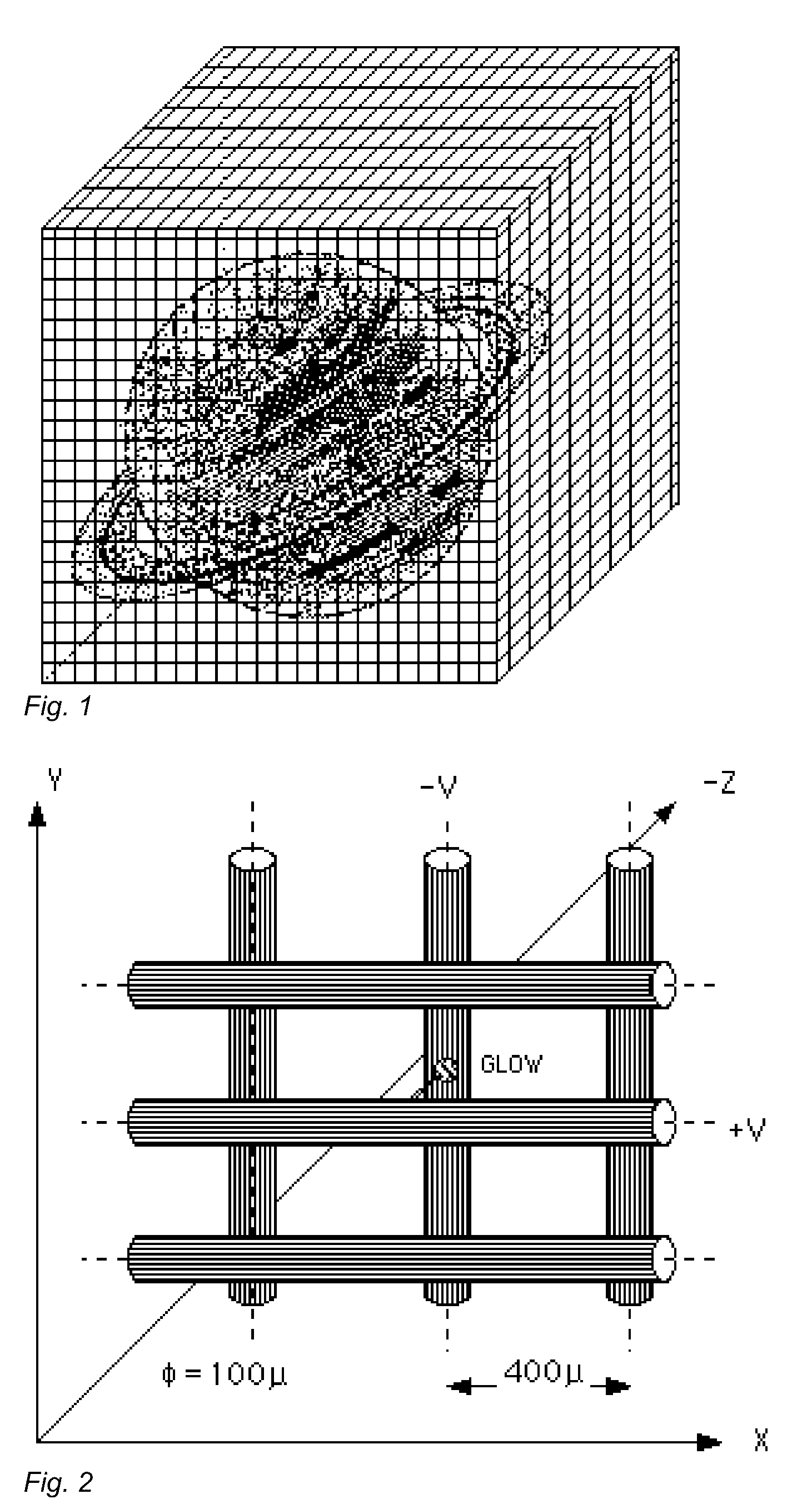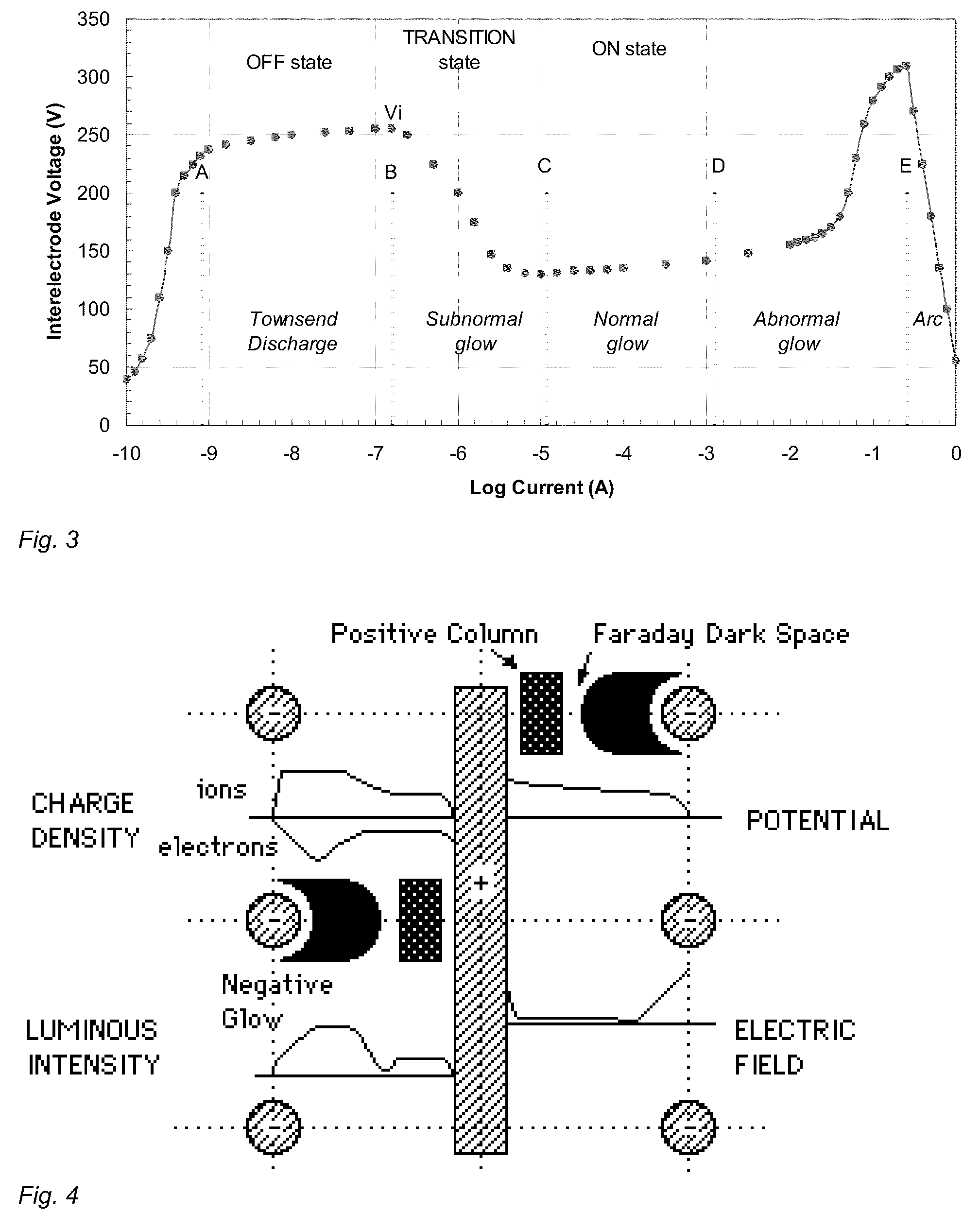3D Video Cube
a cube and video technology, applied in the field of 3d video cubes, can solve the problems of shortchanged 4-d nature of most data, lack of true 360* viewing capability for the audience, and inability to deal with occlusion and opacity, etc., and achieves the effects of strong electrical nonlinearity, long life, and good brightness and luminous efficiency
- Summary
- Abstract
- Description
- Claims
- Application Information
AI Technical Summary
Benefits of technology
Problems solved by technology
Method used
Image
Examples
Embodiment Construction
C.1 Basic Concept
[0005]The video cube operates on the principle of photon emission from a moderate voltage discharge in a low pressure gas. It employs certain technologies already developed for particle physics detectors and gas discharge (plasma) displays.
[0006]The prototype video cube consists of a 225×225×225 mm air-tight glass cube (7 mm wall) filled with 600 Torr of Ne—Ar (0.1%) gas. Inside, an open cube structure, consisting of 4 inner walls made from 3 mm thick glass slabs with 100 μm diameter holes, spaced 400×800 μm apart is used as a frame to support a fine grid of wires. Each plane of wires consists of 100 μm diameter glass-coated tungsten wires, spaced 400 μm apart (FIG. 2). Adjacent wire planes are strung perpendicular to one another. These wires are uniformly tensioned (2 N) and then epoxied to the glass frame.
[0007]Transparent external wire leads attached through the bottom and back of the cube may be used to supply power and signal to the inner wires. If a particular...
PUM
 Login to View More
Login to View More Abstract
Description
Claims
Application Information
 Login to View More
Login to View More - R&D
- Intellectual Property
- Life Sciences
- Materials
- Tech Scout
- Unparalleled Data Quality
- Higher Quality Content
- 60% Fewer Hallucinations
Browse by: Latest US Patents, China's latest patents, Technical Efficacy Thesaurus, Application Domain, Technology Topic, Popular Technical Reports.
© 2025 PatSnap. All rights reserved.Legal|Privacy policy|Modern Slavery Act Transparency Statement|Sitemap|About US| Contact US: help@patsnap.com



